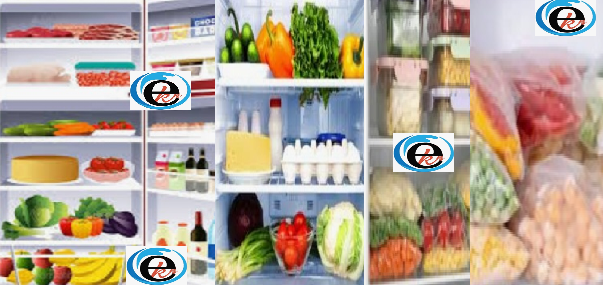Best Refrigerator Practice and Where to Store What in Your Refrigerator.

Best Refrigerator Practice and Where to Store What in Your Refrigerator
Unlike your freezer, which is most energy efficient when packed full of food, your refrigerator functions best when it is just moderately full.
You want air to circulate easily between food items.
Do not leave your refrigerator door open for more than 30 seconds if you can help it.
Yes, that means no staring for too long at the contents of your fridge while you debate what to snack on.
Why?
Well, when you open the door of your fridge you let in huge amounts of warm air while cold air simultaneously spews out from the lower part of the fridge.
After just 30 seconds with the door open, the temperature within the refrigerator can be as much as 15°F degrees higher than it was with the door shut.
It can then take as long as 15 minutes for the inside of the refrigerator to chill back to its original temperature.
In many homes, the refrigerator has replaced the cool cellar where past generations stored perishables.
But are you making the most of yours?
Inside your refrigerator, there are microclimates, each better suited for some foods than others.
For example, the temperatures of the fridge door are warmer than on the main shelves, and the lower shelves on both the door and main area are warmer than the upper shelves.
Wait, isn’t that backward?
Heat rises, so shouldn’t the upper shelves be warmer than the lower?
You would think so, but in most refrigerators, the cold air is emitted from the top down, so the upper shelves are the coldest.
Here’s the info on what goes where.
Fridge Door
- This is the warmest part of your refrigerator, but even it has temperature variations.
- The upper compartments are cooler than the lower and are where you should store butter and eggs.
- Egg compartments often have a plastic cover that insulates the eggs from the circulation of cold air.
- If yours doesn’t, you could create the same effect by storing your eggs in a covered container set on one of the upper shelves of your refrigerator door.
- Condiments such as salad dressings, ketchup, jam, and pickles are okay stored on the fridge door.
- Your milk does not!
Top Shelf
- Store milk, yogurt, and other dairy products except for cheese on the top shelf of the main body of your refrigerator, if possible.
- Fruit juices should also be stored there, as well as leftovers.
Middle Shelf(s)
- Store meat, ripe fruit, and any produce that won’t fit into the crisper drawers here.
Bottom Shelf
- Store cheeses and cold cuts here unless your refrigerator has a midsection drawer for them.
- Vacuum-sealed foods, including store-bought products still in their original packing, should be stored here.
Crisper Drawers
- These are where your fresh vegetables should go.
- But remember that the air inside a refrigerator is very dry, if less so in the crisper drawers.
- Always store your produce in containers or plastic bags, not just loose and exposed.






